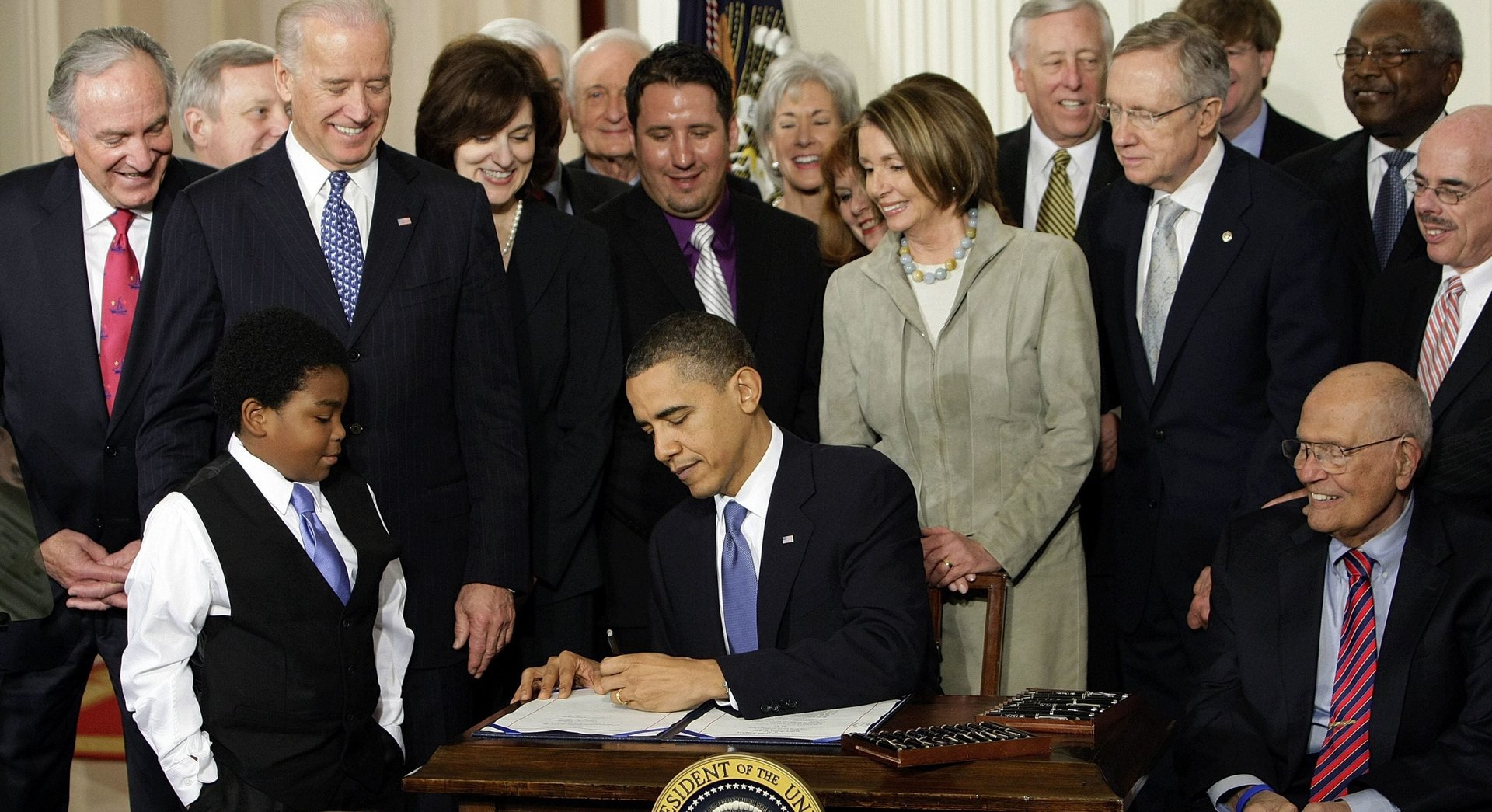Democrats can still save Obamacare
With Republicans in control of the White House and both houses of Congress, GOP leaders have much of the welfare state in their sights. Repealing Obamacare is among their top priorities.


With Republicans in control of the White House and both houses of Congress, GOP leaders have much of the welfare state in their sights. Repealing Obamacare is among their top priorities.
But although Democrats are now in the minority across the federal government, they are not powerless to stop the coming conservative onslaught. Recent US history offers guidance about how to successfully defeat right-wing efforts to overhaul the safety net.
Democrats were in a similar place after the 2004 reelection of former president George W. Bush. After being reelected with a popular vote majority, Bush was intent on spending his political capital. He had a ten-seat Republican majority in the Senate and a 30-seat majority in the House to work with.
Bush was set on making partial privatization of Social Security his top legislative priority. “Younger workers should have the opportunity to build a nest egg by saving part of their Social Security taxes in a personal retirement account,” he said in 2004. “We should make the Social Security system a source of ownership for the American people.”
This would have dramatically overhauled the crown jewel of the American welfare state. Franklin Roosevelt’s social insurance system would have been partially transformed from a dependable old-age pension into a risky personal investment account.
With Republicans firmly in control of Washington, there was little stopping Bush’s privatization effort. Yet less than a year after his reelection, his plan was dead.
How did this happen? According to a 2007 post-mortem analysis by William Galston of the Brookings Institute, three key factors led to the collapse of Bush’s plan.
First, Democrats maintained a unified wall of opposition to the plan. Social Security was “a defining commitment for Democrats,” Galston writes, so the party stuck together to protect a core accomplishment.
Second, the ecosystem of liberal-leaning interest groups mounted a well-funded campaign against Bush’s plan. The AARP flatly opposed privatization, and sunk tens of millions of dollars into an advertising blitz warning of the plan’s risks. This helped shift public opinion against privatization.
The final nail in the coffin was the simple fact that Bush’s overhaul suffered from significant flaws. Privatization did little to shore up the long-term solvency of Social Security, and turned out to worsen the program’s fiscal outlook. Bush belatedly proposed to reduce benefits for the highest-earning future retirees, but conservatives rebelled against this fiscal fix. Republicans couldn’t coalesce around a solution, and Democrats sat on the sidelines and let the GOP take the heat.
By the summer of 2005, Social Security privatization was on its way out. Once Bush became consumed by the government’s failure to respond to Hurricane Katrina, reform was tossed to the scrap heap. Social Security would remain intact.
Democrats would be wise to remember this victory today. Their outlook for protecting the social safety net is arguably brighter now than in January 2005. While Republicans have a wider advantage in the House, Democrats trail by only three seats in the Senate. And Trump is a disinterested policy neophyte and an ideological rogue who owes little deference to the GOP’s congressional agenda.
Democrats can win the coming fight by sticking together in defense of Obamacare, an achievement generations in the making. Outside liberal groups and other stakeholders with an interest in preserving the law—hospitals, insurers, and patients’ groups that stand to lose from repeal—will need to dig in for a pitched battle to convey the full stakes to the public. Key health reform advocacy groups like Families USA are already gearing up to fight repeal.
Granted, Obamacare is not yet a hallowed treasure like Social Security. But many of Obamacare’s key features, like its protections for young adults and ban on pre-existing condition exclusions, are popular. By emphasizing these provisions, liberals may finally be able to build up broader support for the law.
Democrats also have the substance on their side. Repeal will prove trickier than Republicans believe, especially if they want to keep the most popular pieces of the law. Democrats should let repeal-and-replace collapse while loudly and frequently reminding the public that rolling back Obamacare could cost up to 20 million people their health coverage and hike taxes on millions of people currently benefiting from subsidies on its exchanges.
This fight isn’t just about Obamacare, either. Republicans are poised to reach back and rewrite Lyndon B. Johnson’s Great Society programs that expanded health coverage to the elderly and the poor. Paul Ryan’s anti-Obamacare plan aims to wash the federal government’s hands of Medicaid. And Ryan has already said he would tack on a total overhaul of Medicare for good measure. Strangely enough, Republicans would convert Medicare into an Obamacare-style competitive marketplace where seniors must choose among private insurers and a public option.
Given the consternation over the stability of Obamacare’s marketplaces, Ryan is going to have to do some serious work to justify importing similarly complex and confusing markets for retirees. Plus, there will likely be internal GOP discord over these plans. Trump has long vowed to protect Social Security, Medicare, and Medicaid from austerity cuts—a position out of step with his party, but one he boasted about during the campaign.
The path back to power might be shorter than Democrats currently think. Just one year after defeating Social Security privatization in 2005, Democrats swept to power in both houses of Congress and effectively ended the Bush presidency. Two years after that, Barack Obama was elected president. There’s reason to hold out hope that Congressional Democrats can stop the conservative agenda—and they can start by standing firm behind Obamacare.